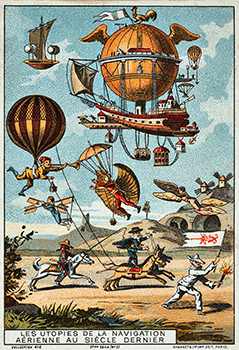 Virtual reality (VR) can make the impossible possible — the rules of physical reality need no longer apply. In VR, you strap on a special headset and leave the real world behind to enter a virtual one. You can fly like a bird high above Manhattan, or experience the feeling of weightlessness as an astronaut on a spaceship.
Virtual reality (VR) can make the impossible possible — the rules of physical reality need no longer apply. In VR, you strap on a special headset and leave the real world behind to enter a virtual one. You can fly like a bird high above Manhattan, or experience the feeling of weightlessness as an astronaut on a spaceship.
VR is reliant upon the illusion of being deeply engrossed in another space and time, far away from your current reality. In a split second you can travel to exotic locales or be on stage at a concert with your favourite musician. Gaming and entertainment are natural fits for VR experiences. A startup called The Void plans to open a set of immersive virtual reality theme parks called Virtual Entertainment Centers, with the first one opening in Pleasant Grove, Utah by June 2016.
This is an exciting time for developers and designers to be defining VR as a new experience medium. However, as the technology improves and consumer hardware and content become available in VR, we must ask: how can this new technology be applied to benefit humanity?
As it turns out, this question is being explored on a few early fronts. For example, SnowWorld, developed at the University of Washington Human Interface Technology (HIT) Lab in 1996 by Hunter Hoffman and David Patterson, was the first immersive VR world designed to reduce pain in adults and children. SnowWorld was specifically developed to help burn patients during wound care. Hoffman explained how VR helps to alleviate pain by distracting patients:
Pain requires conscious attention. The essence of VR is the illusion users have of going inside the computer-generated environment. Being drawn into another world drains a lot of attentional resources, leaving less attention available to process pain signals.
However, VR is not all about escapism. The technology is also being used to create simulations that help people confront conditions like phobias and post traumatic stress disorder (PTSD). VR provides a safe, controlled environment for exposure therapy in which patients, guided by a trained therapist, can process fears or trauma memories and practice coping strategies. Although VR therapy has existed for two decades, it has been fairly inaccessible to the larger public. The emergence of affordable consumer hardware like Samsung Gear VR can help patients to finally take advantage of this life-changing technology.
VR has the tremendous ability to change the way we perceive reality. Humanity can also benefit when virtual reality changes how we see each other.
Film director Chris Milk believes VR can create the ultimate empathy machine. In collaboration with the United Nations (UN), Milk and his team went to a Syrian refugee camp in Jordan in December 2014 and shot the story of a 12-year-old girl named Sidra. When you’re inside of the VR headset and watching Clouds Over Sidra, you’re looking around her world, seeing it in full 360 degrees, in all directions. You’re not watching her through a television screen; you’re sitting right there in her room with her as if you were there. It becomes your world, too. When you look down, you see that you’re sitting on the same ground that she is. “Because of that,” Milk said, “you feel her humanity in a deeper way. You empathize with her in a deeper way.”
Clouds Over Sidra was screened at the World Economic Forum in Davos in January 2015 to a group of leaders whose decisions affect the lives of millions. As Milk noted, these are people who might not otherwise be sitting in a tent in a refugee camp in Jordan. Milk is currently working with the UN on a series of these films in multiple countries, including Liberia and India. “We’re showing them to the people who can actually change the lives of the people inside of the films,” he explained.
“Through this machine, we become more compassionate,” Milk said. “We become more empathetic. We become more connected. And, ultimately, we become more human.”
VR not only presents the opportunity to transport you; it has the power to truly transform you. And therein lies the great potential of VR: to return to reality and effect positive changes that benefit humankind.
Public domain image on article and category pages via Wikimedia Commons.
